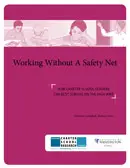When charter school directors step into the job, they step onto a high wire with no safety net below them. Though they take on a broader set of responsibilities than traditional public school leaders, charter directors rarely have the back office administrative support of a district central office. Instead, it is up to them to secure and manage facilities, recruit students and teachers, raise and manage funds, and coordinate curriculum and instruction.
Drawing from a six-state survey, the authors find that, like traditional public school principals, today’s charter school directors often come to their positions from other jobs in education and with training from schools of education. However, charter school leaders tend to be younger and newer to leadership positions; many have only a couple years of experience in school administration.
To meet the needs of up-and-coming directors, the authors call for a comprehensive pre-service and in-service training and support system. National organizations should expand charter-specific training programs and support meaningful internships. States and cities should provide peer-mentoring opportunities that will allow new leaders to learn from the experienced. Charter boards should prepare their schools to survive future leadership transitions.
A series of research briefs (links below) targets different audiences to highlight relevant information from the report.
A summary of this research also appears in Education Week’s annual “Leading for Learning” report, released September 8, 2008. See The High-Wire Job of Charter School Leadership, by Christine Campbell, Betheny Gross, and Robin Lake.





